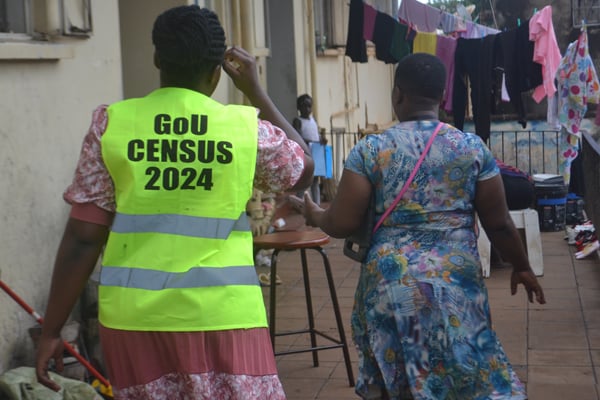Gusaba: Where tradition meets modernity
Friday September 13 2013
The bride’s little sisters wearing Imishanana. Photo/CYRIL NDEGEYA
Last weekend, I attended my umpteenth gusaba, a traditional introduction ceremony for those who intend to marry. I cannot count how many I have attended before. That is how common they are.
The event which precedes the main wedding is conducted at the bride-to-be’s home and the purpose is for the intended groom to put it oddly, “pay up,” the girl’s family. The payment will include a dowry before the girl’s family accepts to officially give away her hand in marriage.
Normally, for one who asks for a girl’s hand in marriage, they need to go through three functions. The first is a civil marriage, which is of course a prerequisite in the country, then Gusaba (literally means to “ask” or “request”) and then comes the church wedding.
One cannot afford to skip any of the above steps and if they do, the last one (a church wedding) could come at a later stage but the first two are very important and have to be done.
Of the three ceremonies, gusaba is one of the most revered and colourful ceremonies of marriage in the country. It is indeed a ceremony that has survived for centuries and underlying its importance.
During gusaba, elders from the groom’s family lead an entourage of relatives and eminent persons to the bride’s family to officially ask for the daughter’s hand in marriage on their son’s behalf.
Pitted against each other in opposite tents or sitting areas, the elder’s from the groom’s family engage in an exchange, more of a battle of wits, with their counterparts from the bride’s family who show no “willingness” to give away their daughter without a fight.
After a series of exchanges and persuasion from the visiting delegation, the girl’s family will eventually give in and allow their daughter to be given to the visitor’s son, but not before teasing and their humbled but calculating counterparts from the groom’s family.
Usually it will take a team of witty and cunning elders from the groom’s side to neutralise their unwavering counterparts before the latter eventually give up and allow their daughter to get married.
The last gusaba I attended, Mzee Tito Rutaremara led a delegation from the groom’s family. The elderly politician is known for his experience in this cultural ceremony and his witty jokes will leave the guests in chuckles. He never fails to win over the bride’s side.
It is literally a battle of wits which involves a lot of humour, sarcasm, riddles, tongue-twisting and hide-and-seek games which will involve presenting the wrong girl (or even an old woman in this case) to the asking family, which is all part of the age old practice.
Changing trends
Even though it remains a significant traditional practice, gusaba too has embraced modern practice with several age old practices which are part of the ceremony replaced by modern alternatives.
A case in point is the dress code for the ceremony. Traditionally, the bride is expected to cover herself up with traditional clothe. In fact, the entourage was not allowed to see the bride’s face.
Umushanana, a tradition two-piece garb won with a small top inside has been the bride and her entourage’s main dress code during gusaba, but today more girls are going for the Indian sari as an alternative.
The one I attended over the weekend, the bride wore a yellow sari, complete with accessories of a golden crown and dangling earrings to give her a complete “Indian look.”
“I opted for the sari to stand out. The umushanana has become so popular but of course it remains the number one choice for many,” said Joan Umulisa, the bride.
The groom’s entourage has in most cases maintained silk shirts and a two-piece cloth with necklaces. Some will accessorise it with a cowboy hat and a walking stick and then complete it with locally made open leather sandals. All these are available for hire too if one cannot afford to buy.
Traditionally, the groom and his entourage used to go bare chested with just two beaded necklaces crisscrossing their chests as well as a headgear made out of sisal (similar to the ones worn by kings as part of the traditional regalia) on their heads but this has changed.
Bride price too has changed. Instead of cows and goats, many now pay it in the money equivalent. If it is three Friesian cows, the groom’s family parts with say Rwf900,000 in what is now jokingly referred to as “cows in the envelope” or “cows from the central bank.”
But as the old ceremony had it, there is always a traditional poet to symbolically recite a poem for the cows (Kuvugira Inka) and it is one of the most exciting parts of the event. Both families have theirs and they have to outdo each other in the recitation.
Also worth noting is that the traditional beer Ikigage has been replaced with modern liquors or even soda. Instead of traditional dancers, some people also hire a popular musician to spice up the event.
